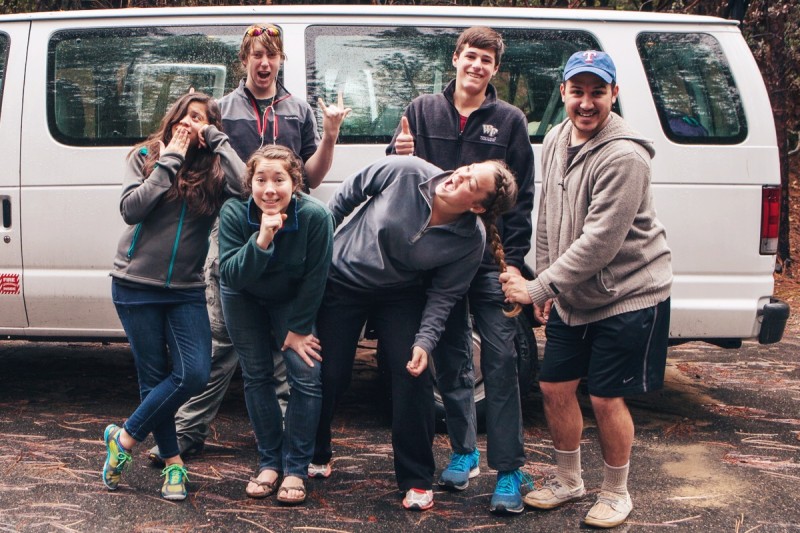[dropcap style=’box’]T[/dropcap]hroughout my time working at Summit Adventure, I have enjoyed the privilege of witnessing the marvel of young adults thriving in community together, despite their stark differences.
A few years back, Bobbie and Tanya arrived at the Summit Adventure Semester Program, choosing to spend their “study abroad” immersed in close-quarters community. Bobbie, a laid-back musician with little direction in life, came from a highly dysfunctional family. Tanya, however, was a very motivated, self-starting outdoors-woman from a stable loving home. They couldn’t have been more opposite from each other, and I wondered if learning in such close-knit circumstances would help or hinder them.
That these two young people would choose community as a context for their education is remarkable, given today’s cultural milieu that values self-centered individualism. In recent years, Western society has been experiencing an alarming shift away from close community living:
For the first two-thirds of the twentieth century a powerful tide bore Americans into ever-deeper engagement in the life of their communities, but a few decades ago—silently, without warning—that tide reversed and…we have been pulled apart from one another and from our communities…¹
A marked decline is now visible in nearly every measure of communal life; statistics of civic and political engagement, PTA activism, club meetings, community projects, and giving to charities are at all-time lows. Unfortunately, religion has followed suit:
Over the last three to four decades Americans have become about 10% less likely to claim church membership, while our actual attendance and involvement in religious activities has fallen by roughly 25 to 50 percent.²
Putnam further concludes:
More people are “surfing” from congregation to congregation more frequently, so that while they may still be “religious,” they are less committed to a particular community of believers.³
Our lack of commitment, paired with devotion to self, leads to isolation and loneliness that affects our mental health and productivity, particularly between the ages of 18 and 24. Among college students, depression has doubled and suicide has tripled in the last 15 years. Fully 40 percent of them have felt so depressed at times that they are barely able to function. 4
Clearly, young adults require community to thrive. They need an example of communal living as inspiring as the first-century Christian church:
And all the believers met together in one place and shared everything they had. They sold their property and possessions and shared the money with those in need. They worshiped together at the Temple each day, met in homes for the Lord’s Supper, and shared their meals with great joy and generosity—all the while praising God and enjoying the goodwill of all the people. (Acts 2:44-47, NLT)
The first church presents a very compelling picture of what Dietrich Bonhoeffer called “life together.” The original Christian community shared intensely with one another, demonstrating with more than just words an overwhelming concern for each person. Their way of life was so unique and impactful that thousands joined in the fellowship.
Immersion semesters are a modern way college students can find this type of community. Though differing in approach and focus, these semesters typically enmesh students with one another in common living situations, extensive group projects, real time conflict resolution, and challenging adventure experiences.
Because close community and deep relationships are difficult to establish and maintain, immersion semesters are extraordinarily challenging. Yet staying committed to four months of community harvests significant rewards. Bobbie and Tanya developed a remarkable willingness to openly discuss difficult issues. More than once, I recall seeing them walk laps around the parking lot while giving one another constructive feedback. They demonstrated learning to be patient with each other as they negotiated the stresses of climbing and serving in Ecuador. And on a five-day winter expedition in Yosemite’s high country, Tanya consistently urged Bobbie to eat and drink enough to stay warm while Bobbie helped ease Tanya’s anxiety over the uncertainties of off-trail hiking.
The two lived out daily the concept of Proverbs 27:17, “As iron sharpens iron, so a friend sharpens a friend.” Ultimately, their commitment to community and one another is what made all the difference in how successful their semester would become.
In recent years, Bobbie and Tanya have returned to work professionally at Summit Adventure—and with great effectiveness. There is little doubt that their significant personal growth was forged in the furnace of authentic and transparent communal living. They have provided a powerful example of the results community living benefited in their own lives and the lives of many others they have touched since—reminding us of what “life together” offers those who are willing to partake.
Interested in joining the Summit Adventure college/gap year semester, ISAS? For more information, click here.
Sources:
¹ Robert Putnam. Bowling Alone: The Collapse and Revival of American Community. Simon and Schuster, 2000; p. 27.
² Ibid., p. 72.
³ Ibid., p. 74.
4 Margarita Tartakovsky. Depression and Anxiety Among College Students. PsychCentral.


